Contemporary Church History Quarterly
Volume 28, Number 1/2 (Spring/Summer 2022)
Review of James D. Strasburg, God’s Marshall Plan: American Protestants and the Struggle for the Soul of Europe (New York: Oxford University Press, 2021). Pp . 313 + ix. ISBN: 9780197516447
By Kyle Jantzen, Ambrose University
In the ruins of 1945 Berlin, American Christian leader Stewart Winfield Herman, Jr., worried about the danger of Communism to Christian civilization as he and other US Protestants knew it. Just as problematic, however, was the “German Problem” they had grappled with throughout the war years: how could Germany be both the birthplace of Protestantism and the country of Nazism—home to Adolf Hitler’s racial nationalism and militarism. And where did the theological liberalism of Germany fit into the picture?
 This is the starting point for James D. Strasburg’s fine study, God’s Marshall Plan: American Protestants and the Struggle for the Soul of Europe. It is the story of how, during and after the Second World War, leading US Protestants “identified Germany as the prime territory for creating a new Christian and democratic world order in the heart of Europe, one that could dispel any new totalitarian threat, whether spiritual or political” (2).
This is the starting point for James D. Strasburg’s fine study, God’s Marshall Plan: American Protestants and the Struggle for the Soul of Europe. It is the story of how, during and after the Second World War, leading US Protestants “identified Germany as the prime territory for creating a new Christian and democratic world order in the heart of Europe, one that could dispel any new totalitarian threat, whether spiritual or political” (2).
God’s Marshall Plan revolves around two groups of US Protestants. The first is the “ecumenists,” who worked through the powerful Federal Council of Churches (FCC) and were eager to develop a new “’World Christianity,’ an imagined global community that was ecumenically Protestant in its spirituality and democratically oriented in its politics” (2). Moreover, “they marshalled their spiritual and political energies to oppose any perceived ‘totalitarian’ threat to such an order—including communism and secularism, as well as Catholicism and Protestant fundamentalism—both at home and across the European continent” (3).
The second group is the “evangelicals” (often “fundamentalists” in Strasburg’s narrative), who “promoted biblical fundamentals and conversionary mission as the proper theological expression of Protestant Christianity. They also identified individual liberty, limited government, free market capitalism, and an America-first foreign policy as their nation’s proper political values” (3).
As Strasburg explains, his book “narrates the origins and history of these competing American Protestant missions to Germany and Europe.” More specifically, “it examines how ecumenical and evangelical American Protestants used the onset of two world wars and an era of reconstruction as rationale to spiritually and politically intervene in Europe” in order to develop their “respective world orders.” Beyond that, the book explains “how this spiritual struggle for Europe activated and advanced American Protestantism’s long-standing Christian nationalism—the belief that the United States was a Christian nation with an exceptional role to play in the world” (3).
As they worked for Europe’s spiritual reconstruction, both ecumenists and evangelicals drew on an American “‘conquering faith’—its spiritual impulse to shape, lead, and transform the globe through the spread of Protestant Christianity and American democracy.” In pursuit of this aim, both groups of US Protestants “mobilized for world war and pursued strategic partnerships with federal officials, foreign policymakers, and the American military. Through these efforts, they hoped to spread democratic values and Protestant Christianity to Europe, and as such, to remake the continent in the American image” (4).
But, as Strasburg argues, the competing agendas of US Protestants in postwar Germany both grew out of and reflected religious fractures at home, as ecumenists and evangelicals struggled over “the spiritual leadership of their nation and the so-called ‘Christian West’” (4). Moreover, European Protestants had their own ideas about the spiritual and social reconstruction of war-torn Germany and Europe, the most prominent of which was a “third way” theology of peace and reconciliation independent of either superpower. This, in turn, prompted some US Protestants to rethink their own approaches to world missions and global politics in the era of the Cold War. Not surprisingly, here too ecumenists and evangelicals clashed, and so “the spiritual struggle for Europe thus left American Protestants deeply divided and at odds over their global mission. It ultimately forged competing theologies of global engagement—Christian nationalism and Christian globalism—that transformed the United States, diplomacy, and religion in an era of world war and beyond” (5).
As Strasburg demonstrates throughout God’s Marshall Plan, when US Protestants grappled with rival ideologies—democratic liberal, fascist, and communist—very often,
their national and political allegiances overpowered their religious commitments. In particular, such loyalties often challenged their faith’s summons to love of neighbor, regardless of that neighbor’s nationality, race, or politics. Christian nationalism likewise clashed with the biblical admonition to prioritize peacemaking and to seek the welfare of the wider world. Finally, it undercut the biblical mandate to hold a higher citizenship in heaven and to declare a greater devotion to a kingdom that knew no borders. (12)
One cannot read this history and not be struck by the parallels to our contemporary moment. In so many ways, the fissures Strasburg explores throughout his book remain challenges at the very heart of American Christianity today.
God’s Marshall Plan traces this story from the aftermath of the First World War through the rise of totalitarian regimes on through the Second World War and into the Cold War that followed. With respect to the book’s title, Strasburg notes:
The Marshall Plan serves as an apt metaphor for the ambitions of American Protestants in Europe. As the American government worked to remake the continent’s markets and politics, American Protestants complemented these efforts through tent revivals, theological exchanges, and reconstruction programs designed to revive the continent’s soul. In effect, they worked to establish an American empire of the spirit. They hoped that exporting their faith’s values abroad and creating new ocean-spanning religious networks would provide spiritual support for America’s new transatlantic democratic order. (18)
Strasburg develops his argument in eight chapters. The first (“Spiritual Conquest”) explores the US Protestant response to the First World War. For ecumenists like Congregational minister, relief worker, and church leader Henry Smith Leiper, the German imperialism that led to war in 1914 required the antidote of US spiritual democracy in keeping with Wilsonian internationalism. But for evangelicals like the fundamentalist Baptist pastor and anti-evolutionist William Bell Riley, the problem was not German imperialism but German theological modernism, which required the solution of a return to the Bible, Christian morality, and evangelical mission (23). Strasburg explains the competing ideas of ecumenists and evangelicals by surveying groups and individuals as diverse as the Federal Council of Churches (FCC), President Woodrow Wilson, lay evangelist and International Missionary Council leader John R. Mott, Leiper, Congregationalist minister Josiah Strong, the 1910 World Missionary Conference, German pastors Martin Niemöller and Friedrich Siegmund-Schultze, The Christian Century, theologian Reinhold Niebuhr, revivalist Billy Sunday, Riley, fundamentalist leaders French Oliver and A.C. Dixon, and The King’s Business. But if US ecumenists “outlined a mission to create a new international system rooted in Wilsonian principles,” to make Europe “more authentically Christian,” and to “promote a democratic spirit abroad” (42), conservative Protestants founded the World’s Christian Fundamentals Association to combat “the doctrinal shallowness and modernist teachings of the Federal Council and German Protestantism” (44) and supported and supported “America First” Republican Henry Cabot Lodge’s US Senate faction which fought tooth and nail against the formation of the League of Nations. Racism, anti-Catholicism, anti-socialism, and antisemitism were also features of this movement of reaction against US participation in ecumenical Christianity and internationalist politics. As Strasburg explains, in the aftermath of the First World War, US Protestants were increasingly divided about global mission—caught between Christian nationalism and Christian globalism. Despite these divisions, however, Strasburg argues that “American Protestants still generally agreed that the United States was a Christian nation with an exceptional role to play in the world. … American Protestants worked to reshape the world through American values and outlined a vision for global spiritual conquest” (50).
In chapters 2 to 4, Strasburg describes the growth of US Protestant engagement with Germany through the economic and political upheaval of the Weimar era (“World Chaos”) and the turmoil of Nazism and its church politics (“The Lonely Flame”), and World War II and the defeat of Nazism (“For Christ and Country”). The rise of Hitler and the Nazi movement provoked alarm among US Protestants, whether because of its totalitarianism, antisemitism, and racial nationalism (ecumenists) or because its collectivist nature seemed all too similar to “Soviet communism, planned economies, and the New Deal” (evangelicals) (52). Strasburg notes that even as modernists and fundamentalists sparred in the United States, so too pro-Nazi German Christians and their opponents in the Confessing Church entered into a church struggle in Germany. American ecumenist Protestants followed these events closely, expressing concern over the unwillingness even of Confessing Church leaders to move beyond their own conservatism, nationalism, and militarism to oppose the Nazi state itself (58).
Here Strasburg discusses the ideas and views of Leiper and Niebuhr, and recounts Bonhoeffer’s experiences in the United States and the impact of his experiences at Union Seminary and among Black Christians in New York. Bonhoeffer returned to Germany “as one of the most resolute German Protestants in his spiritual and political opposition to Hitler and the German Christian crusade” (64). Likewise, American ecumenists supported the Confessing Church at ecumenical conferences and other events, such as the 1934 Baptist World Congress held in Berlin. And Leiper wrote extensively in books and articles about the menace of Hitlerism, arguing that only the universal values of Protestant ecumenism could support the democratic order that would combat Nazism and, more broadly, secularism.
In contrast, evangelicals saw the rise of European dictators as a portent of the end times. Viewing current events through an apocalyptic lens (Daniel, Ezekiel, Revelations), these premillennial fundamentalists were on the lookout for the Antichrist, believing as they did that the world was indeed descending into the chaos of the end times. Here Gerald Winrod, Riley, J. Frank Norris, and Oswald J. Smith take centre stage, with their attacks on Soviet communism and New Deal America. Of note was Winrod’s 1935 pilgrimage to Germany, during which he revised his views of Hitler and the Nazi state, in part based on the virulent antisemitism Winrod now preached. So too Riley, who praised Hitler for rescuing “Germany from the very jaws of atheistic communism” and blamed Bolshevism on international Jewry (75). Other fundamentalists did raise concerns about Nazism and its persecution of Jews, including Baptist churchman John J. Rice. For all of these fundamentalists, however, Christian nationalism was the antidote to both foreign dictators and dangerous domestic developments in both church and state.
Meanwhile, in Berlin, the ecumenist pastor Stewart Herman shepherded the “lonely flame” of American Protestantism in Germany at the American Church. Herman studied and travelled widely in Germany, witnessing the rise of the German church struggle in the early years of the Third Reich. He also visited Jews in Germany and understood their plight clearly. While he appreciated Nazi attacks on Communism, Herman was alarmed over political developments in Hitler’s Germany, and his own involvement in American affairs in Berlin earned him the attention of the Gestapo. Herman tried to remain neutral, but the arrest of Niemöller in 1937 pushed him towards the Confessing Church, and Herman became something of a spokesman for the Confessing Church in international ecumenical meetings, which its representatives were prohibited from attending.
From 1938 onwards, Herman’s ministry took place under the shadow of the persecution of Jews. Though he did help so-called “non-Aryan” Christians, Herman harboured anti-Judaic and antisemitic sympathies and generally refused to aid Jews. Christian mission to Jews, urging them to convert, was for Herman the answer to Jewish persecution. Only when the Nazi regime began deporting Jews in 1941 was Herman moved to aid Jews, though once the United States declared war, he was interned with American Embassy staff. Strasburg uses Herman’s story and references to Leiper and Bonhoeffer to explore diverse perspectives and levels of willingness to act among ecumenical Protestants.
The entry of the United States into the war aroused ecumenical Protestants (Niebuhr, Herman—after his return from Germany—and John Foster Dulles) to declare that America needed to responsibly exercise its power, defeat “pagan” Nazism, and establish a new global Christian democratic order. Herman went so far as to join the Office of Secret Services (OSS). He also talked up the Confessing Church as an anti-Nazi opposition movement, helping create a myth that would later serve the Allied Occupation well. During the war, ecumenists began to draft plans for a democratic and Christian order in postwar Germany, and its integration into a multilateral federation of nations.
American evangelicals also supported the war, but also “advanced their commitments to conversionary mission, liberty, and unilateralism” (104). Viewing the war from a premillennialist fundamentalist perspective, Winrod and colleagues initially opposed the US entrance into the war, promoting “America First” isolationism. Other fundamentalists stressed links between Hitler, Satan, the Beast, and the Anti-Christ, and so supported the effort to defeat them and hold evil at bay. As Christian nationalists, fundamentalists conflated God and country, piety and patriotism. It was during the Second World War that the American flag found its way into many Protestant sanctuaries (124). Prayer became a weapon of war and Christian nationalist evangelism a form of mobilization, as in the case of the 1944 “Victory Rally” organized by Youth for Christ (YFC), bringing 28,000 Chicago area youth and service members together. Fundamentalists also attacked “modernism” and the Federal Council of Churches, which it accused of “theological Hitlerism” (127). Another sign of the resurgence of evangelicals was the formation of the National Association of Evangelicals (NAE) in 1942, which attempted to look forward but still opposed women’s rights and racial equality.
Chapters 5 through 8 carry the story forward, from the spiritual reconstruction of Germany (“Reviving the Heartland”) and the threat of Soviet Communism (“Battleground Europe”) to the attempt to create a new Christian world order (“God’s Marshall Plan”) and evangelistic campaigns in the time of the Cold War (“Spiritual Rearmament”). Ecumenist Protestants like Stewart Herman played an important role in postwar Germany, serving religious and political reconstruction agendas as he travelled about on behalf of the World Council of Churches, supported by the OSS and the American Military Government (AMG). With others, he hoped the German churches could serve a foundational role in the Christian and democratic renewal of Germany.
As Strasburg argues, “In occupied Germany, American ecumenists wed their ‘conquering faith’ to America’s newfound project of building the ‘American Century.’ Men like Herman and Allen and John Foster Dulles advanced religious and state interests in tandem and used their nation’s postwar primacy to build the foundations of an American-led new Christian world order” (132). They perceived an emerging “spiritual cold war against secularism and communism” and “worked to recruit German Protestants as Christian partners in their quest to establish a new democratic and Christian alliance against these perceived threats” (133). A new Reformation would transform the German churches into a democratic, voluntaristic, and activist force.
But German Protestants (including the liberated Martin Niemöller and Württemberg regional bishop Theophil Wurm) had their own ideas about the reconstruction of their church and nation, and often opposed US Protestant agendas. German and European leaders argued that they themselves needed to rebuild their churches and spiritual life. One key battle took place over the structure of the postwar German Church. Wurm and Niemöller clashed over the formation of the Evangelical Church in Germany (EKD), with Wurm’s traditional state church model winning out over Niemöller’s more ambitious congregational plan. Another contentious topic was the question of German guilt, and here Niemöller’s “Stuttgart Declaration” receives Strasburg’s attention. The author rightly notes the silence of the statement on the subject of the Jews. A third challenge was denazification, which German church leaders chafed against.
Evangelicals responded to the defeat of Germany and the rising threat of Communism with calls by young evangelists Torrey Johnson (YFC) and Billy Graham for a “spiritual invasion” of “Battleground Europe” (156). As Strasburg explains, they focused first on “occupied Germany, where they preached their conversionary gospel and commitments to freedom and free enterprise,” supported by American military chaplains and fundamentalist military officers (157). Once again, theological modernism, secularism, and the rejection of the Bible and of Jesus Christ were presented as important causes of the German catastrophe (and American worldliness), even as revival and return to Christ would restore Germany (and America).
But whether ecumenical or evangelical, US Protestants partnered with the US government (including President Harry Truman personally) and the American Military Government to oppose a rising Communist threat. German church leaders like Niemöller, Berlin Protestant Bishop Otto Dibelius and Berlin Catholic Bishop Konrad von Preysing also undertook speaking tours in the United States, praising the democracy and freedom of the USA and hoping to generate sympathy and support for Germany and its churches. Moreover, they supported the Marshall Plan to physically reconstruct Germany as a parallel force contributing to the spiritual renewal of Germany, alongside the efforts of US Protestants. As Strasburg puts it, “In an era when American capital, consumer goods, popular culture, and military platoons poured into Europe and began to remake the continent’s economics, society, and politics, this accompanying spiritual intervention sought to transform Europe’s soul” (185). One place these spiritual and economic plans came together was in the reconstruction of German churches, so many of which had been destroyed during the Allied bombing of Germany. Christian literature campaigns and educational projects were also important. So too were US Protestant relief efforts to gather material supplies for beleaguered Germans.
But even within the effort to rebuild Germany, Strasburg finds conflicts between ecumenists and evangelicals. The latter group criticized the World Council of Churches—Francis Schaeffer’s L’Abri project was a fundamentalist attempt response to both liberal Christianity and secular society. Evangelicals like Billy Graham also criticized the Marshall Plan itself, arguing it was “folly” and a “give-away program” rooted in “deficit spending.” Once again, big government and collectivism were the enemy. Evangelicals also rejected Truman’s Fair Deal programs, calling the proposal for national health insurance “socialized medicine” and a pathway to “societal slavery” (209).
Evangelical Protestants responded to the problems of postwar Germany most forcefully through revival meetings. In 1954, YFC evangelist Billy Graham held meetings in the former Nazi parade grounds at Nuremberg, preaching salvation through Jesus Christ. But Graham was also trying to convince Germans to support the US Cold War effort to push back Communism and protect Europe. To that end, US evangelical Protestants also strongly supported the US military. “Led by a coalition of free-enterprise businessmen, Cold War hawks, and conservative clergy, these postwar crusades rallied God-fearing Americans to defend their values of faith, freedom, and free enterprise both at home and abroad against New Deal liberalism, Soviet communism, and postwar secularization” (212). This despite the fact that many German Protestants resisted rearmament.
One intriguing element of this spiritual campaign against Communism was the Wooden Church Crusade, a plan to build 49 chapels along the line of the Iron Curtain in West Germany which gained strong support among US political and industrial leaders. By the end of 1956, 28 houses of worship had been built, including a few synagogues.
In the book’s epilogue, the author carries the story of US Protestant engagement with Germany through to the end of the Cold War. Strasburg concludes that if US evangelical Protestants were more obviously “America First” in their orientation, US ecumenical Protestants were also “quick to serve their nation’s interests and advance its global project” (238). As they tried to build a just and peaceful world order, they promoted a particularly American combination of democracy, capitalism, and Christianity abroad. And as they worked to Christianize and democratize the world, protecting it against totalitarian and secular ideologies, they did so by attempting “to rebuild Germany as the European cornerstone of an American-led Christian world order” (238). In their own way, they too supported American Christian nationalism. Thus the line between the Christian globalism of the ecumenists and the Christian nationalism of the evangelicals was in truth rather blurry. And Strasburg carries this point into today, arguing that “the challenge for many Protestant Christians in the twentieth century involved untangling their faith from the creeds of nation, race, and empire. That struggle continues to this day” (239).
In contrast to this Christian nationalism, German and European Protestant leaders espoused a Third Way in the 1960s, as men like Karl Barth and Martin Niemöller sharply critiqued elements of American capitalism, militarism, empire, and domestic social inequality. In some cases, this proved influential among US ecumenists. For example, Stewart Herman, whose ideas and work are central to Strasburg’s account, ended up denouncing antisemitism and racism, supporting refugee work, learning from liberation theology and Vatican II Catholicism, and embracing interfaith partnerships with Jews (243). To a large extent, however, US Protestants continued to struggle with racial equality, immigration, and other challenges to (white) Christian nationalism, even as they remained susceptible to the allure of political power. Strasburg’s concluding hope is that studying this history “might play a part in helping American Protestants foster and practice theologies and a style of politics that more fully reflect the ways of a border-defying faith” (252).
This is a fine work of history—deeply and widely researched and clearly argued. Strasburg’s grasp of the secondary literature on both German and especially US Protestantism is solid, and the notes are filled with references to books, articles, and speeches by Protestant leaders on both sides of the Atlantic, including the personal correspondence and papers of Henry Smith Leiper and Stewart Winfield Herman and other material drawn from church and state archives in Washington, Berlin, and Geneva, among others. With almost 50 pages of rich notes, no bibliography was included.
As for criticisms, it is not surprising that this is almost entirely the story of the men who led churches and spoke for both American and German Christianity. Women are virtually absent from this account, save for the Birmingham women who donated syrup to the German relief effort (195). Yet we know that North American women were substantially involved in relief and administrative work in the postwar era, as well as in Christian missions. Did they engage with the issues raised in God’s Marshall Plan any differently than did their male colleagues? More broadly, beyond attending conferences or rallies or subscribing to church periodicals, is there evidence to indicate how deeply engaged ordinary US Protestants were in the spiritual reconstruction of Germany? The Wooden Church Crusade is an excellent example of this. Were there others? Finally, one would wish for a little more background on some of the characters whose writings Strasburg quotes. To what extent can their ideas and statements be taken as representative of their denominations or constituencies?
Those issues aside—and some go beyond the scope of an already extensively-researched study—God’s Marshall Plan is an enlightening and challenging account of how US Protestant Christian nationalism worked itself out both abroad in postwar Germany and at home in the United States. An excellent contribution to the literature, it is also, for those with eyes to see and ears to hear, a cautionary tale.

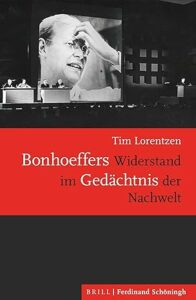 But as Tim Lorentzen’s new book illustrates, it is hardly the first time that interpretations of Bonhoeffer have been based on his ties to the German resistance. Lorentzen, Professor of Early Modern Church History at Kiel University, traces the chronology of German cultural narratives about Bonhoeffer’s resistance, and their intersections with German Protestant memorialization, from 1945 to 2006. His focus on resistance (rather than German historiography about Nazism, the Holocaust, the Protestant Kirchenkampf, or Bonhoeffer’s theological writings) is a narrow lens through which to understand Bonhoeffer, but it raises interesting and provocative questions. As historians know, Bonhoeffer was a minor figure in the resistance circles—and yet this very aspect of his life has become central in the narratives about him. Would Bonhoeffer’s theology be as well-known and widely read today if this were not the case? Has the emphasis on resistance led to the historical distortions one finds in many works on Bonhoeffer? Conversely, does it offer insights we might not otherwise have into his theology and his life?
But as Tim Lorentzen’s new book illustrates, it is hardly the first time that interpretations of Bonhoeffer have been based on his ties to the German resistance. Lorentzen, Professor of Early Modern Church History at Kiel University, traces the chronology of German cultural narratives about Bonhoeffer’s resistance, and their intersections with German Protestant memorialization, from 1945 to 2006. His focus on resistance (rather than German historiography about Nazism, the Holocaust, the Protestant Kirchenkampf, or Bonhoeffer’s theological writings) is a narrow lens through which to understand Bonhoeffer, but it raises interesting and provocative questions. As historians know, Bonhoeffer was a minor figure in the resistance circles—and yet this very aspect of his life has become central in the narratives about him. Would Bonhoeffer’s theology be as well-known and widely read today if this were not the case? Has the emphasis on resistance led to the historical distortions one finds in many works on Bonhoeffer? Conversely, does it offer insights we might not otherwise have into his theology and his life?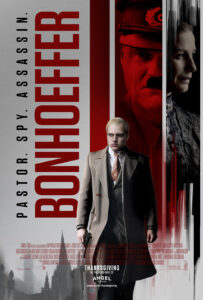 The film, which is beautifully shot and scored, but at times laden with clunky dialogue, begins with a glimpse into the domestic life of the Bonhoeffer family (warm and loving, and also tranquil until Dietrich’s beloved older brother Walter is killed in the Great War). Yet it largely focuses on Bonhoeffer’s involvement in a plot to assassinate Adolf Hitler, who became chancellor of Germany in 1933. The film flashes back and forth, from Bonhoeffer’s imprisonments in Buchenwald and Flossenbürg to the years preceding the war. It tells the tale of a young theologian whose participation in the 1944 plot to assassinate the Führer and overthrow the Nazi regime seems nearly inevitable. The flashbacks often muddle both the chronology and the film’s interpretation of Bonhoeffer’s de-contextualized words.
The film, which is beautifully shot and scored, but at times laden with clunky dialogue, begins with a glimpse into the domestic life of the Bonhoeffer family (warm and loving, and also tranquil until Dietrich’s beloved older brother Walter is killed in the Great War). Yet it largely focuses on Bonhoeffer’s involvement in a plot to assassinate Adolf Hitler, who became chancellor of Germany in 1933. The film flashes back and forth, from Bonhoeffer’s imprisonments in Buchenwald and Flossenbürg to the years preceding the war. It tells the tale of a young theologian whose participation in the 1944 plot to assassinate the Führer and overthrow the Nazi regime seems nearly inevitable. The flashbacks often muddle both the chronology and the film’s interpretation of Bonhoeffer’s de-contextualized words. This is the starting point for James D. Strasburg’s fine study, God’s Marshall Plan: American Protestants and the Struggle for the Soul of Europe. It is the story of how, during and after the Second World War, leading US Protestants “identified Germany as the prime territory for creating a new Christian and democratic world order in the heart of Europe, one that could dispel any new totalitarian threat, whether spiritual or political” (2).
This is the starting point for James D. Strasburg’s fine study, God’s Marshall Plan: American Protestants and the Struggle for the Soul of Europe. It is the story of how, during and after the Second World War, leading US Protestants “identified Germany as the prime territory for creating a new Christian and democratic world order in the heart of Europe, one that could dispel any new totalitarian threat, whether spiritual or political” (2).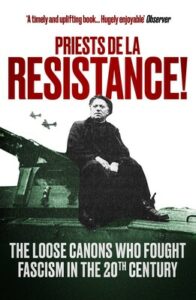 The book is divided into five sections, beginning in occupied France, with stories of “resistance par excellence” focusing on the lives of Canon Felix Kir (of blanc de cassis aka “Kir” fame) and Abbe Pierre (born Henri Marie Joseph Groues). Both of these individuals engaged in acts of sabotage, rescue work (especially of persecuted Jews), and generally served as thorns in the sides of the Nazis and their French collaborators.
The book is divided into five sections, beginning in occupied France, with stories of “resistance par excellence” focusing on the lives of Canon Felix Kir (of blanc de cassis aka “Kir” fame) and Abbe Pierre (born Henri Marie Joseph Groues). Both of these individuals engaged in acts of sabotage, rescue work (especially of persecuted Jews), and generally served as thorns in the sides of the Nazis and their French collaborators.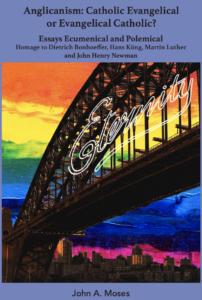 In his foreword to the book, Mark Lindsay welcomes Moses warmly into the realm of contemporary theological angst, affirming the proper place of a historian in all such things. This may seem all too obvious, but then the authority of the historical craft, and of historical knowledge altogether, has for some years now become increasingly obscure to those who oversee the life and work of most of our Protestant churches. When a moment of vital significance turns up historians are seldom to be found in the counsels of authority. If anything, they are likely to be deliberately excluded from them, though they might now and then be recruited to write introductory paragraphs. Evidently, we are all expected to return to a vigorous state of primitive Christianity as though nothing of significance has occurred across the intervening centuries. But there may be other reasons to maintain this state of ignorance. The historian of the modern church is not quite a tame creature. The churches prefer a show of loyalty, while those in charge of them care not at all to be criticised. Historians tend to do this rather freely, particularly when provoked. The historian of the Reformation may unhelpfully point out doctrinal contradictions or emphasize acts of violence. The historian of secularization will certainly prove to be bad for morale. As for the historians of the Third Reich, it is much safer to leave them in their university departments than to invite them to observe patterns and parallels. And why should there be any, after all?
In his foreword to the book, Mark Lindsay welcomes Moses warmly into the realm of contemporary theological angst, affirming the proper place of a historian in all such things. This may seem all too obvious, but then the authority of the historical craft, and of historical knowledge altogether, has for some years now become increasingly obscure to those who oversee the life and work of most of our Protestant churches. When a moment of vital significance turns up historians are seldom to be found in the counsels of authority. If anything, they are likely to be deliberately excluded from them, though they might now and then be recruited to write introductory paragraphs. Evidently, we are all expected to return to a vigorous state of primitive Christianity as though nothing of significance has occurred across the intervening centuries. But there may be other reasons to maintain this state of ignorance. The historian of the modern church is not quite a tame creature. The churches prefer a show of loyalty, while those in charge of them care not at all to be criticised. Historians tend to do this rather freely, particularly when provoked. The historian of the Reformation may unhelpfully point out doctrinal contradictions or emphasize acts of violence. The historian of secularization will certainly prove to be bad for morale. As for the historians of the Third Reich, it is much safer to leave them in their university departments than to invite them to observe patterns and parallels. And why should there be any, after all?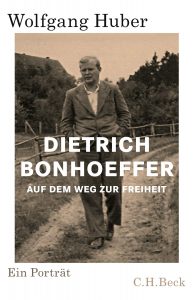 The structure of the book is not unduly distinctive, but it sets out clearly the overall argument and method. Huber’s Bonhoeffer is certainly a big and complex figure. He is also one full of contrasts and the author delights in framing and exploring them. An introductory section evokes the figure of Bonhoeffer as we might first encounter him in a variety of places, not least over the Great West Door of Westminster Abbey. There follows a section on Bonhoeffer’s background and early formation and then another three on his early work in the contexts of university and church life, the first situating him firmly in the landscapes of German thought, the second examining a theology of grace which was deeply rooted in the precepts of Lutheranism, and the third discussing the place of the Bible in a world of maturing historical criticism. Each of these sections present dualities which already defined so much in Bonhoeffer’s work (‘Individual spirituality or Society’; ‘The Church of the World or the Church of the Word’; ‘Acting justly and waiting for God’s own time’; ‘The Historical Jesus or the Jesus of Today’). The young Bonhoeffer is certainly very much at home in the intellectual landscapes of German Lutheranism but the emerging vision is an open one and there is no knowing where it will lead.
The structure of the book is not unduly distinctive, but it sets out clearly the overall argument and method. Huber’s Bonhoeffer is certainly a big and complex figure. He is also one full of contrasts and the author delights in framing and exploring them. An introductory section evokes the figure of Bonhoeffer as we might first encounter him in a variety of places, not least over the Great West Door of Westminster Abbey. There follows a section on Bonhoeffer’s background and early formation and then another three on his early work in the contexts of university and church life, the first situating him firmly in the landscapes of German thought, the second examining a theology of grace which was deeply rooted in the precepts of Lutheranism, and the third discussing the place of the Bible in a world of maturing historical criticism. Each of these sections present dualities which already defined so much in Bonhoeffer’s work (‘Individual spirituality or Society’; ‘The Church of the World or the Church of the Word’; ‘Acting justly and waiting for God’s own time’; ‘The Historical Jesus or the Jesus of Today’). The young Bonhoeffer is certainly very much at home in the intellectual landscapes of German Lutheranism but the emerging vision is an open one and there is no knowing where it will lead.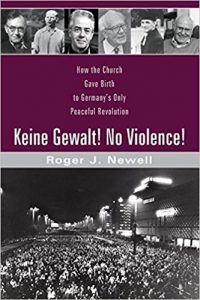 This sense of observing and interpreting like a guest whose eyes are being opened by degrees to something new and unexpected is certainly one of the strengths of the book. It makes Newell himself something of a tourist – in the best sense – and equally an attractive introducer to readers coming to the same questions afresh. The vital presence at the heart of the story is the pastor of the Nikolaikirche himself, Christian Führer, who in 1989 opened the doors of the church to all people – and, in particular, to many who were disaffected by the Communist state – so that they could meet together, light candles, share what was important to them all and find new ways to insist upon these things in a world of repression and intimidation.
This sense of observing and interpreting like a guest whose eyes are being opened by degrees to something new and unexpected is certainly one of the strengths of the book. It makes Newell himself something of a tourist – in the best sense – and equally an attractive introducer to readers coming to the same questions afresh. The vital presence at the heart of the story is the pastor of the Nikolaikirche himself, Christian Führer, who in 1989 opened the doors of the church to all people – and, in particular, to many who were disaffected by the Communist state – so that they could meet together, light candles, share what was important to them all and find new ways to insist upon these things in a world of repression and intimidation.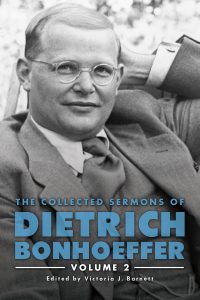 Three themes run through these sermons: the seriousness of Bonhoeffer’s Christianity, the insight of his responses to the social and political crises of the late Weimar and Nazi eras, and the resolution of his engagement in the Kirchenkampf (German Church Struggle).
Three themes run through these sermons: the seriousness of Bonhoeffer’s Christianity, the insight of his responses to the social and political crises of the late Weimar and Nazi eras, and the resolution of his engagement in the Kirchenkampf (German Church Struggle).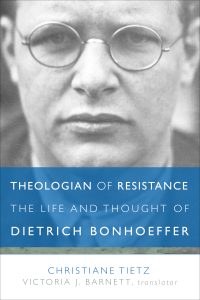 Whereas a new biography of Martin Niemöller is long overdue, one might ask: do we need another on Bonhoeffer?
Whereas a new biography of Martin Niemöller is long overdue, one might ask: do we need another on Bonhoeffer?